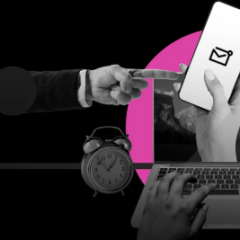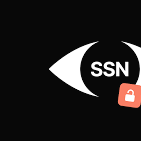A Comprehensive Guide to Trading Crypto Futures on Binance

Table of Contents
- Introduction to Binance Futures
- Understanding Futures Trading on Binance
- Choosing Futures Contracts and Collateral
- Understanding Margin Ratios and Risk
- Exploring Funding Rates in Crypto Futures
- Understanding Leverage and its Risks
- Implementing Orders and Trading Strategies
- Exploring Advanced Trading Techniques
- FAQ
Introduction to Binance Futures
Crypto Futures are synthetic contracts based on the price of another asset, allowing traders to take positions on the price movement without actually owning the underlying asset. With crypto Futures, you can go long (expecting the price to go up) or short (expecting the price to go down).
Trading Futures offers several benefits, including:
- The ability to trade the price of an asset without owning it.
- Potential for higher returns due to leverage.
- Ability to hedge positions or take advantage of arbitrage opportunities.
Binance Futures is a platform provided by Binance that allows users to trade crypto Futures. To access Binance Futures, simply click on the "Futures" tab at the top of the screen on the Binance website. From there, you can navigate to the trading screen, which is where you can place your Futures trades.
If you haven't signed up for Binance yet, you can do so by following the link provided below. Additionally, if you need a beginner's tutorial on how to set up an account and get started with Binance, a tutorial is available in the description.
When trading on Binance Futures, you have the option to choose between different types of Futures contracts, such as perpetual contracts and delivery contracts. Perpetual contracts have no expiry date, allowing you to keep a position open for as long as you want. Delivery contracts, on the other hand, have an expiry date, and you trade based on the expected price at that date.
To fund your Futures positions, you can choose between using USDT (a stablecoin) or other cryptocurrencies, such as Bitcoin, as collateral. USDT margining provides stability and ease of understanding your profit and loss, while coin margining allows for potential higher profits in bull markets but carries more risk due to the volatility of the collateral.
When trading with leverage on Binance Futures, it's crucial to be aware of the margin ratio. The margin ratio represents the ratio between your collateral and your equity in the account. It's important to monitor this ratio to avoid margin calls or liquidation. Binance provides a margin account score to help you understand the health of your account and prevent liquidation.
In addition to trading the price of an asset, Binance Futures also introduces the concept of funding rates. Funding rates are mechanisms that incentivize traders to bring the price of the Futures contract in line with the spot price. Traders either pay or receive funding rates based on the market conditions and their positions.
It's worth noting that trading with leverage carries significant risks, and it's recommended to avoid using leverage, especially for beginners. Leverage amplifies both potential profits and losses, so it's crucial to understand the risks and manage your positions accordingly.
Binance Futures also offers various order types, including take-profit and stop-loss orders, to help you manage your positions effectively. You can set these orders simultaneously with your position entry or add them later.
Lastly, Binance Futures provides opportunities for professional traders to hedge positions or take advantage of arbitrage through delta-neutral strategies. These strategies involve taking offsetting positions to eliminate market risk and profit from funding rates.
Remember, trading Futures involves risks, and it's essential to do thorough research and practice risk management.
To learn more about Binance Futures and sign up for an account, click here. For a comprehensive beginner's tutorial on Binance, check out the tutorial in the description.
Understanding Futures Trading on Binance
In the world of cryptocurrency, futures trading has become increasingly popular. Binance, one of the leading cryptocurrency exchanges, offers a Futures platform where users can trade synthetic contracts based on the price of various assets. Let's delve into the details of futures trading on Binance.
Explanation of Synthetic Contracts
Synthetic contracts are financial instruments that derive their value from an underlying asset, in this case, cryptocurrencies. With futures trading on Binance, traders can speculate on the price movement of an asset without actually owning it. This allows for greater flexibility and the ability to profit from both rising and falling markets.
Difference between Long and Short Positions
When trading futures, traders have the option to take either a long or short position. Going long means that the trader expects the price of the asset to rise, while going short means anticipating a price decrease. This flexibility allows traders to profit in both bullish and bearish market conditions.
Overview of the Futures Trading Screen on Binance
Accessing the futures trading screen on Binance is simple. Just click on the "Futures" tab at the top of the screen on the Binance website. Once there, you'll find a chart displaying the price movement of the selected asset, along with the order book and recent trades. The trading screen also provides details about the assets being traded and the contract specifications.
Introduction to Margin Ratio and Funding Rates
Trading futures on Binance involves using leverage, which allows traders to open larger positions with a smaller amount of capital. The margin ratio represents the ratio between the trader's collateral and equity in the account. It's important to monitor this ratio to avoid margin calls or liquidation.
Binance Futures also introduces the concept of funding rates. Funding rates are mechanisms that incentivize traders to bring the price of the futures contract in line with the spot price. Traders either pay or receive funding rates based on market conditions and their positions.
It's important to note that trading with leverage carries significant risks, especially for beginners. Leverage amplifies both potential profits and losses, so it's crucial to understand the risks and manage positions accordingly.
In conclusion, futures trading on Binance offers a unique opportunity to trade synthetic contracts based on the price of cryptocurrencies. Traders can take advantage of both rising and falling markets, while using leverage to increase their trading power. However, it's important to approach futures trading with caution and thoroughly understand the risks involved.
Choosing Futures Contracts and Collateral
When trading on Binance Futures, you have the option to choose between different types of Futures contracts, such as perpetual contracts and delivery contracts. Perpetual contracts have no expiry date, allowing you to keep a position open for as long as you want. Delivery contracts, on the other hand, have an expiry date, and you trade based on the expected price at that date.
There are two main types of collateral that you can use to fund your Futures positions on Binance: USDT (a stablecoin) and coin margin. USDT margining provides stability and ease of understanding your profit and loss. Coin margining, on the other hand, allows for potential higher profits in bull markets, but it carries more risk due to the volatility of the collateral.
Choosing the type of collateral to use depends on your risk tolerance and trading strategy. If you prefer a more stable and predictable profit and loss, USDT margining is a suitable option. On the other hand, if you're comfortable with the volatility and potential higher profits, coin margining may be more appealing.
It's important to note that trading with leverage carries significant risks, especially for beginners. Leverage amplifies both potential profits and losses. Using higher leverage increases your risk exposure, so it's crucial to understand the risks and manage your positions accordingly.
When trading on Binance Futures, you also have the option to choose between cross margin and isolated margin. Cross margin allows you to use all the assets in your account to fund all of your positions. This means that if one position incurs losses, the collateral from other positions can be used to cover those losses. Isolated margin, on the other hand, allows you to fund individual positions separately. Losses in one position do not affect the collateral or profits of other positions.
Both cross margin and isolated margin have their advantages and risks. Cross margin provides more flexibility and the ability to manage multiple positions with shared collateral. Isolated margin allows for more precise risk management, as losses in one position are contained and do not affect other positions.
Before choosing your Futures contracts and collateral type, it's important to carefully consider your risk tolerance, trading strategy, and financial goals. Understanding the benefits and risks of each option will help you make informed decisions and manage your positions effectively.
Understanding Margin Ratios and Risk
Margin ratio is an important factor to consider when trading with leverage on Binance Futures. It represents the ratio between your collateral and your equity in the account. Monitoring this ratio is crucial to avoid margin calls or liquidation.
The margin ratio indicates the level of risk you are taking in your trades. If the ratio is high, it means you have a larger amount of collateral compared to your equity, indicating a healthier and safer position. However, if the ratio is low, it means you have a smaller amount of collateral compared to your equity, indicating a riskier position.
Binance provides a margin account score to help you understand the health of your account and prevent liquidation. This score is calculated based on the amount of collateral you have, your open positions, and your profit or loss. It is important to regularly monitor this score to ensure the stability of your account.
In addition to the margin ratio, it is crucial to understand the relationship between collateral and potential losses. When trading with leverage, losses can exceed the amount of collateral you have, leading to liquidation. It is important to carefully manage your positions and set appropriate stop-loss orders to minimize potential losses.
When choosing collateral for margin, Binance offers two options: USDT margin and coin margin. USDT margining provides stability and ease of understanding your profit and loss, as it is based on a stablecoin. Coin margining, on the other hand, allows for potential higher profits in bull markets but carries more risk due to the volatility of the collateral.
It is important to carefully consider your risk tolerance and trading strategy when choosing the type of collateral to use. If you prefer a more stable and predictable profit and loss, USDT margining is a suitable option. However, if you're comfortable with the volatility and potential higher profits, coin margining may be more appealing.
Remember, trading with leverage carries significant risks, especially for beginners. It is important to fully understand the risks involved and to manage your positions accordingly. Regularly monitoring your margin ratio, setting appropriate stop-loss orders, and choosing the right type of collateral can help mitigate risks and improve your overall trading experience.
Exploring Funding Rates in Crypto Futures
Funding rates play a crucial role in the world of crypto futures trading. In this section, we will explore what funding rates are, how they affect trading, and how you can use them to your advantage.
Explanation of Funding Rates and Their Purpose
Funding rates are mechanisms used in crypto futures markets to incentivize traders to bring the price of the futures contract in line with the spot price. When the price of a futures contract deviates from the spot price, funding rates are adjusted to encourage traders to take actions that will help realign the prices.
For example, if there are more buyers in the futures market, pushing the price higher than the spot price, long positions (buyers) will have to pay a funding rate to short sellers. This funding rate serves as a penalty for buyers and an incentive for short sellers to bring the price back in line with the spot price.
Discussion on How Funding Rates Affect Trading
Funding rates can significantly impact trading strategies and profits. Traders who hold positions for longer periods may be subject to regular funding payments or may receive funding payments, depending on the market conditions and their positions. It's important to consider funding rates when calculating potential profits and losses.
High funding rates may reduce profits for long positions, as traders need to pay these rates periodically. Conversely, traders with short positions may benefit from high funding rates, as they receive payments from long positions. Understanding funding rates is crucial for managing risk and accurately assessing potential returns.
Overview of Real-Time Funding Rates on Binance
Binance, a leading cryptocurrency exchange, provides real-time funding rate information for various assets on its futures platform. Traders can access this information to stay updated on the current funding rates and make informed trading decisions.
By visiting the Binance Futures data page and selecting the "Real-Time Funding Rate" section, traders can view the funding rates for different assets. This information allows traders to evaluate the potential costs or benefits of holding positions based on the current funding rates.
Introduction to Funding Rate Arbitrage Strategies
One unique aspect of crypto futures trading is the opportunity for funding rate arbitrage strategies. Traders can take advantage of the funding rates by engaging in delta-neutral strategies, where they simultaneously hold offsetting positions to eliminate market risk.
By going long in the spot market and short in the futures market or vice versa, traders can capture the funding rate as a yield without taking directional market risk. This strategy allows traders to benefit from the funding rates while minimizing exposure to price movements.
It's important to understand that funding rate arbitrage strategies come with their own risks and complexities. Traders should thoroughly research and understand these strategies before implementing them.
In conclusion, funding rates play a vital role in crypto futures trading. They incentivize traders to align futures contract prices with spot prices and can significantly impact trading strategies and profits. Binance provides real-time funding rate data, allowing traders to stay informed and explore various arbitrage opportunities. Remember to approach funding rate arbitrage strategies with caution and conduct thorough research to mitigate risks.
Understanding Leverage and its Risks
When trading crypto futures on Binance, leverage can be a powerful tool that allows traders to open larger positions with a smaller amount of capital. Leverage amplifies both potential profits and losses, so it's important to understand its risks before using it.
Explanation of Leverage and its Purpose in Trading
Leverage in trading refers to the ability to control a larger position in the market with a smaller amount of your own capital. It allows traders to increase their trading power and potentially generate higher returns. Leverage is commonly expressed as a ratio, such as 2x, 5x, or 10x, indicating how much larger the position can be compared to the trader's own capital.
The purpose of leverage is to magnify potential profits. By controlling a larger position, traders can benefit from price movements in the market. However, it's important to note that leverage also amplifies losses, which means that traders can potentially lose more than their initial investment.
Risks Associated with Leverage
Trading with leverage carries significant risks, especially for beginners. Here are some key risks to be aware of:
- Increased Losses: Leverage amplifies losses, meaning that even small price movements against your position can result in significant losses.
- Margin Calls and Liquidation: When trading with leverage, it's important to monitor your margin ratio. If the ratio falls below a certain level, known as the liquidation price, your positions may be automatically liquidated by the exchange.
- Volatility: Crypto markets are known for their volatility, which can lead to rapid price swings. Leverage can magnify the impact of this volatility on your positions.
- Psychological Pressure: Trading with leverage can create additional stress and pressure, as losses can accumulate quickly. It's important to stay calm and manage your emotions when trading with leverage.
Calculating Position Sizes with Different Leverage Ratios
When trading with leverage, it's crucial to calculate your position sizes carefully to manage your risk. Here's a simple example:
Let's say you have $1,000 in your account and you want to open a position with 5x leverage. With 5x leverage, you can control a position size of $5,000 in the market.
To calculate how much of your capital to allocate to the position, you can use the formula:
Position Size = (Account Balance / Leverage Ratio)
In this example, the position size would be $200, which is 20% of your account balance.
Explanation of Liquidation Prices and Managing Risk
Liquidation prices are important to understand when trading with leverage. The liquidation price represents the price at which your positions will be automatically liquidated if the market moves against you.
To manage your risk, it's crucial to set your stop-loss orders at a price level that aligns with your risk tolerance and trading strategy. Stop-loss orders help limit potential losses by automatically closing your positions if the price reaches a predetermined level.
Additionally, regularly monitoring your margin ratio and ensuring it stays above the liquidation price can help prevent the liquidation of your positions.
Remember, leverage can be a powerful tool in trading, but it also comes with significant risks. It's important to understand these risks and use leverage responsibly to manage your positions effectively.
Implementing Orders and Trading Strategies
When trading on Binance Futures, it's important to understand the different order types and trading strategies that can be implemented. Here are some key points to consider:
Explanation of Different Order Types on Binance Futures
Binance Futures offers various order types to help traders manage their positions effectively. Some common order types include:
- Market Orders: These allow you to buy or sell an asset at the current market price.
- Limit Orders: These enable you to set a specific price at which you want to buy or sell an asset.
- Stop-Limit Orders: These combine stop orders and limit orders. They allow you to set a stop price and a limit price, and when the stop price is triggered, a limit order is placed.
- Take-Profit Orders: These are used to automatically sell a position when the price reaches a certain level, allowing you to lock in profits.
- Stop-Loss Orders: These are used to automatically sell a position when the price falls to a certain level, helping to limit potential losses.
Demonstration of Entering Take Profit and Stop-Loss Orders
When entering a trade on Binance Futures, you have the option to simultaneously set take-profit and stop-loss orders. This allows you to define your profit target and limit your potential losses from the outset. By entering these orders, you can effectively manage your risk and ensure that you exit the trade at the desired price levels.
Discussion on Reducing Positions and Risk Management
Managing your positions and risk is a crucial aspect of successful trading. Binance Futures offers features that allow you to reduce your positions and implement risk management strategies. By using options like reducing your position size or setting stop-loss orders, you can minimize potential losses and protect your capital.
Example of Opening and Closing a Position on the Platform
Let's walk through an example of opening and closing a position on Binance Futures. Suppose you want to open a long position on Bitcoin with a leverage of 5x. You can set your entry price, define your position size, and set a stop-loss order to manage your risk. Once the position is opened, you can monitor its performance and decide when to close it. When closing the position, you can either manually sell your position or set a take-profit order to automatically exit at a desired profit level.
Remember that implementing orders and trading strategies requires careful consideration and risk management. It's important to thoroughly understand the features and options provided by Binance Futures to make informed trading decisions.
Exploring Advanced Trading Techniques
When it comes to trading crypto futures on Binance, there are several advanced techniques that experienced traders can utilize to enhance their strategies. In this section, we will explore some of these techniques and how they can be used to optimize trading outcomes.
Explanation of Hedging Positions and Delta Neutral Strategies
Hedging positions and implementing delta neutral strategies are advanced techniques that can be used to mitigate market risk and lock in profits. Hedging involves taking offsetting positions to minimize potential losses in a volatile market. Traders can hedge their positions by simultaneously going long and short on the same asset or using other correlated assets.
Delta neutral strategies aim to eliminate market risk by balancing the delta, or the sensitivity of the position to price movements, with offsetting positions. This strategy allows traders to make profits regardless of the direction the market moves, as long as the delta remains neutral.
Discussion on Using Futures for Arbitrage Trading
Futures contracts provide opportunities for arbitrage trading, where traders can profit from price discrepancies between the futures market and the underlying spot market. By simultaneously buying and selling offsetting positions, traders can exploit these price differences to make risk-free profits.
Arbitrage trading with futures requires quick execution and access to real-time market data. Traders need to closely monitor the futures market and spot market to identify favorable arbitrage opportunities and act swiftly to capitalize on them.
Overview of Risk and Opportunity Cost in Advanced Strategies
Advanced trading techniques, such as hedging positions and arbitrage trading, come with both risks and opportunity costs. While these strategies can help minimize losses and generate profits, they require careful analysis, monitoring, and precise execution.
Risks associated with advanced strategies include market volatility, execution delays, and counterparty risk. Traders must also consider opportunity costs, as engaging in these strategies may tie up capital that could be used for other trading opportunities.
Explanation of Trading BTC with Different Collateral Types
When trading on Binance Futures, traders have the option to use different collateral types, such as USDT or other cryptocurrencies, to fund their positions. Each collateral type has its own advantages and risks.
Using USDT as collateral provides stability and ease of understanding profit and loss, while trading with cryptocurrency collateral allows for potential higher profits in bull markets. However, cryptocurrency collateral is also subject to market volatility, which increases risk.
Traders should carefully consider their risk tolerance and trading strategy when choosing the collateral type for their BTC trades.
By exploring these advanced trading techniques, traders can enhance their strategies and potentially optimize their trading outcomes. It's important to note that these techniques require careful analysis, risk management, and experience. As with any trading activity, thorough research, practice, and risk management are essential for success.
FAQ
Answers to common questions about trading Crypto Futures on Binance:
- What are Crypto Futures?
- Crypto Futures are synthetic contracts based on the price of another asset, allowing traders to take positions on the price movement without actually owning the underlying asset.
- What is leverage?
- Leverage is the ability to control a larger position in the market with a smaller amount of your own capital. It allows traders to increase their trading power and potentially generate higher returns.
- What are the risks of trading with leverage?
- Trading with leverage amplifies both potential profits and losses. It's important to understand the risks involved and manage your positions accordingly.
- What are funding rates?
- Funding rates are mechanisms used in crypto futures markets to incentivize traders to bring the price of the futures contract in line with the spot price. Traders either pay or receive funding rates based on market conditions and their positions.
- What is the margin ratio?
- The margin ratio represents the ratio between your collateral and your equity in the account. It's important to monitor this ratio to avoid margin calls or liquidation.
- What are the different order types on Binance Futures?
- Binance Futures offers various order types, including market orders, limit orders, stop-limit orders, take-profit orders, and stop-loss orders.
For additional resources and support, you can visit the Binance website and explore their educational materials. Don't forget to take advantage of any bonuses and sign up for an account using the link provided below. Happy trading!
Click here to sign up for a Binance account and start trading Crypto Futures.
.gif.3d1d5323e9b6ce95f2a2dd4e30872dc6.gif)
.gif)
.gif)
.gif)
.gif)













.gif)
0 Comments
Recommended Comments
There are no comments to display.